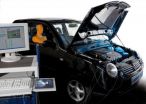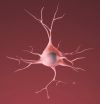(Press-News.org) This release is available in German.
The natural product wood grows in locations with different climate, soil and environmental conditions. These differences influence its properties as construction material: "Scandinavian spruce, for instance, has smaller knots and lower raw densities than spruce coming from central Europe, and this results in different strength and stiffness values," explains Professor Jan-Willem van de Kuilen from the Department of Wood Technology at TUM. That is why, to ensure the stability of wooden structures, timber must be strength graded before it is used. So far, grading is predominantly visual, i.e. according to visible attributes influencing strength, e.g. the proportion of knots, which reduce wood stability, or discolorations indicative of fungi.
Machine strength grading is both more efficient and more reliable: It also includes criteria that are not visible, such as density or elasticity, and it works much faster than expert eyes. Nonetheless, machine grading of engineered wood products has not become established practice yet, because it is subject to stringent EU-wide standards – a machine may only sort timber of a certain type and from a specified growth area, for which it has been granted specific acceptance. When, for instance, a machine that has been officially accepted for grading German pine, is to be used for Polish pine, EU legislation stipulates that it first go through a lengthy and very costly series of tests measuring 450 samples of this specific timber. However, a sawmill often has to process timber from different growth areas in parallel, making machine strength grading uneconomical.
The Department of Wood Technology at TUM, together with international colleagues, tackled this challenge within the European research project "GRADEWOOD." The researchers set out to establish the following: In how far does timber origin influence strength? Does the existing differentiation in EU norms according to country of origin even make sense? To answer these questions the TUM team spent two years in Germany, France, Belgium and Sweden grading over 6,000 timber specimens of spruce and pine from ten European countries. A great deal of work, considering that for every individual sample they had to use five machines to measure the different timber strength parameters. One approach was to get the timber to vibrate and then measure its natural frequency: the higher the natural frequency, the stronger the timber. After completing the series of tests, the TUM researchers measured the actual strengths of the timber samples. They did this by bending the samples until they broke – the force required, together with the thickness and width of the sample were used to calculate the strength of the timber.
When they compared the compiled data, the wood technologists were in for a surprise: Not all regional differences in timber strength were attributable to the measured parameters. For instance, their extensive experiments showed the density and elasticity of spruce from Poland and Sweden to be the same. Yet, the respective strengths turned out to be to be different. TUM project leader Peter Stapel from the Department of Wood Technology concludes: "There are parameters influencing timber properties that are yet to be established." And so the search goes on – in a next step the wood researchers hope to find additional measurable parameters that can be used to increase the forecast accuracy of the timber grading machines.
There is, however, one important issue that the TUM researchers can already elucidate on clearly: Together with their international colleagues they successfully demonstrated that there are indeed differences in timber properties according to growth areas, albeit they are so small that it makes no sense to classify timber according to the country of origin. The scientists believe that a classification by three larger regions in which timber displays similar properties would be perfectly sufficient: Northern, Central and Eastern Europe. And this is what the researchers would like to propose to the European Committee for Standardization. This would facilitate machine grading of engineered wood products throughout Europe – and could, in future, translate not only into more reliable, faster and more cost-effective strength grading of timber, but also into higher safety in construction.
###
Contact:
Technische Universitaet Muenchen
Department of Wood Technology
Prof. Jan-Willem van de Kuilen or Peter Stapel
80797 Muenchen, Germany
Tel.: +49 89 / 2180-6462 or -6352
E-Mail: vandekuilen@wzw.tum.de or stapel@wzw.tum.de
http://www.holz.wzw.tum.de
Background:
"GRADEWOOD - Grading of timber for engineered wood products" is a subproject of the European WoodWisdom-Net Research Program. GRADEWOOD bundles nine research groups from eight EU countries, with the Technische Universitaet Muenchen as the only German project partner. Altogether 1.4 million euro are available for GRADEWOOD over the entire term of the project. The TUM researchers are being funded with 140,000 euro by the Federal Ministry of Education and Research until the end of August 2011. Further information on the project can be found at http://www.nexdo.com/public?w=579&p=GRADEWOOD, and on the whole WoodWisdom-Net Research Program at http://www.woodwisdom.net/
Technische Universitaet Muenchen (TUM) is one of Europe's leading technical universities. It has roughly 460 professors, 7,500 academic and non-academic staff (including those at the university hospital "Rechts der Isar"), and 26,000 students. It focuses on the engineering sciences, natural sciences, life sciences, medicine, and economic sciences. After winning numerous awards, it was selected as an "Elite University" in 2006 by the Science Council (Wissenschaftsrat) and the German Research Foundation (DFG). The university's global network includes an outpost in Singapore. TUM is dedicated to the ideal of a top-level research based entrepreneurial university.
TUM researchers recommend new EU standards for machine strength grading of timber
2011-03-13
ELSE PRESS RELEASES FROM THIS DATE:
Mount Sinai researcher finds unexpected temperature sensation for a light detector
2011-03-13
New research from Mount Sinai School of Medicine has discovered that rhodopsin, a pigment of the retina that is responsible for the first events in the perception of light, may also be involved in temperature sensation. This detection had not been revealed in previous studies.
The work emerged from a collaboration between the laboratory of Andrew Chess, M.D., Professor in the Departments of Neuroscience, Developmental and Regenerative Biology and Genetics and Genomic Sciences at Mount Sinai, and the laboratory of Craig Montell, Ph.D., Professor of Biological Chemistry ...
Distracted Driving Causes Fatal Pennsylvania Car Accident
2011-03-13
The United States Department of Transportation says that almost 5,500 people died and half a million were injured in 2009 in crashes involving distracted drivers. A recent accident on Interstate 81 in Pennsylvania brings new life to these staggering statistics.
A dump truck carrying 24 tons of rock salt crashed caused a five-vehicle crash in the Susquehanna township. State police believe the truck driver was distracted, although they have not yet said how. Police investigating the fatal truck accident said that the truck driver never slowed when approaching stopped traffic ...
Hannover Messe: Smart materials for high-tech products
2011-03-13
This release is available in German.
The droning of a car driving along the highway can be nerve-racking. Often, a driver cannot understand the passengers in the rear seat, not to mention the pianissimo on the car stereo. Actually, though, there are ways to drive this disruptive vibration out of the car. This is possible thanks to "smart materials" – intelligent materials that can tailor their own condition to changing situations with highest speed. The possible applications are diverse and promising – not just for carmakers but also for mechanical engineering and the ...
Less than one-third of children ages 5-15 will wake up to home smoke alarms
2011-03-13
An Australian study to determine the likelihood of school-aged children waking up to their home smoke alarm found that 78% of children slept through a smoke alarm sounding for 30 seconds. The outcomes of the study are published today in the journal Fire and Materials.
Home smoke detectors have been relied on since the 1960s, and have been known to save lives in domestic fires. The study's results show children are most at risk of not waking up to the sound of their home's smoke detector. Though related studies have been conducted in the past, the sample size used in ...
What Every California Driver Needs to Know about UM Insurance
2011-03-13
What is UM Insurance?
Uninsured motorist insurance, or UM or UMI, provides protection when you are in an accident with an uninsured driver. UM also provides benefits in cases when you are involved in a hit and run accident so long as the uninsured vehicle made physical contact with your car.
In addition to UM coverage, there also is UIM, or underinsured motorist, coverage. UIM provides benefits when you are in an accident with a driver who does not have enough insurance to cover all of your losses - which you are at risk of having happen any time you are in an accident ...
Nanoscale whiskers from sea creatures could grow human muscle tissue
2011-03-13
Nanoscale whiskers from sea creatures could grow human muscle tissue
Minute whiskers of nanoscale dimensions taken from sea creatures could hold the key to creating working human muscle tissue, University of Manchester researchers have discovered.
Scientists have found that cellulose from tunicates, commonly known as sea squirts, can influence the behaviour of skeletal muscle cells in the laboratory.
These nanostructures are several thousand times smaller than muscle cells and are the smallest physical feature found to cause cell alignment.
Alignment is important ...
Finding shows potential way to protect neurons in Parkinson's, Alzheimer's, ALS
2011-03-13
SAN ANTONIO (March 11, 2011) — Cell biologists pondering the death of neurons — brain cells — said today that by eliminating one ingredient from the cellular machinery, they prolonged the life of neurons stressed by a pesticide chemical. The finding identifies a potential therapeutic target to slow changes that lead to neurodegenerative disorders such as Parkinson's and Alzheimer's diseases.
The researchers, from The University of Texas Health Science Center San Antonio, found that neurons lacking a substance called caspase-2 were better able to withstand pesticide-induced ...
Bruno Mars Pleads Guilty to Felony Cocaine Charge, Las Vegas Judge Hands Down Probation
2011-03-13
Bruno Mars became a forefront figure in the music industry the minute his popular songs like "Grenade" and "Just the Way You Are" hit the airwaves. But his honest and wholesome image soon became tainted when media outlets exposed his recent cocaine bust last September 2010 in a public restroom at the popular Las Vegas Hard Rock Hotel. Since then, not much has been disclosed about Mars' legal woes--until now.
The Associated Press reports that the singer recently accepted a plea deal. Mars, whose real name is Peter Hernandez, pled guilty last month to a felony cocaine ...
How incentives can hurt group productivity and shared resources
2011-03-13
BOSTON/NEW YORK – March 11, 2011 –A study by Professor Stephan Meier, Assistant Professor, Management at Columbia Business School, and co-author Andreas Fuster, Ph.D. candidate, Harvard University Department of Economics, which was published in Management Science, an INFORMSR publication, found that while monetary incentives in the workplace, such as subsidies or bonuses, are regarded to be effective ways to encourage staff contributions, incentives can interfere in public and workplace environments dependent on informal norm enforcement. In the context of this study, informal ...
More molecules for tuberculosis
2011-03-13
Scientists are collaborating on a new international research project to identify antibiotics that can kill tuberculosis and fight resistant strains.
"We want to accelerate the discovery of new compounds that can be turned into effective drugs," said Professor Tony Maxwell from the John Innes Centre, a key player in "More Medicines for Tuberculosis", a new European research project.
Two billion people are currently infected with TB and three million die every year. TB causes more deaths than any other infectious disease. Rates are increasing, especially in sub-Saharan ...

